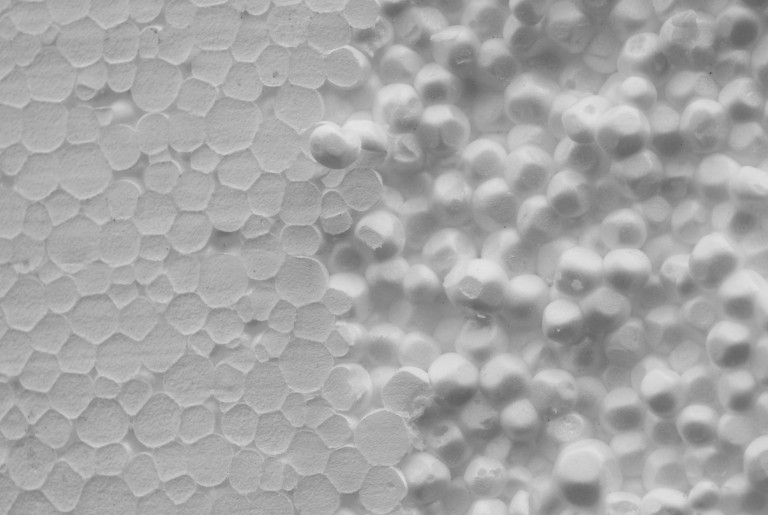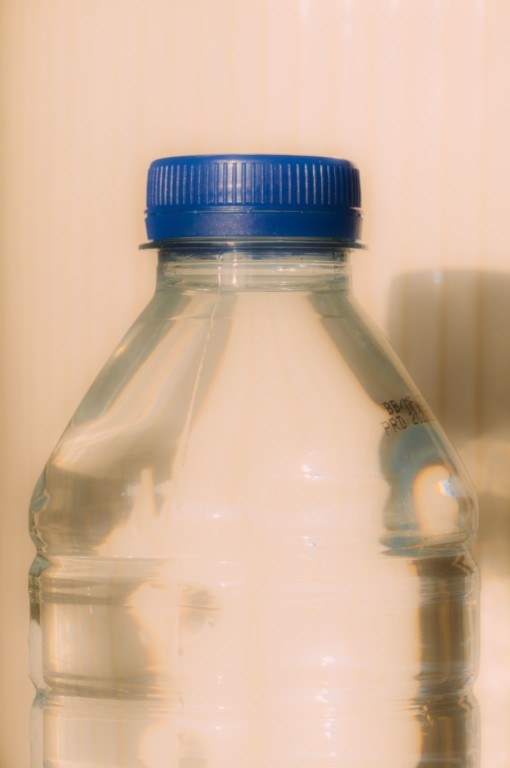
The standard for determining anaerobic biodegradation of plastic materials is the ASTM D5511-12 testing method. The Japanese BioPlastic council funded these tests to see the total anaerobic(Landfill) biodegradation of PLA. What they found directly contradicts recent “peer-reviewed” studies funded by PLA manufacturers. While the PLA manufacturers have stated that at 35C very little biodegradation or off-gassing of methane had happened, it directly contradicts Japanese studies at the same temperature and they reported 2.9% methane gas production a week at 35C, while CEO of PLA manufacturers states that it represents 100 years, it is obvious their “peer-reviewed” article is not truly peer-reviewed.
PLA manufacturers have stated that ” Today, some landfills are actively managed to act as “bioreactors” to intentionally promote microbial degradation of the waste, with collection and utilization of the by-product gas. To capture this scenario, the second series of tests were designed to simulate high solids anaerobic digestion under optimal and significantly accelerated conditions and were performed at 35˚ C (95˚ F) for 170 days. While there was “some” biogas released in this aggressive series of tests, the amount released was not statistically significant according to the peer reviewed research paper. Both series of tests were designed to represent an examination of what could happen under a range of significantly accelerated anaerobic landfill conditions and were roughly equivalent to 100 years of conditions in a biologically active landfill.
The researchers concluded that ” semicrystalline PLA (typical of >96 wt% of resin used to manufacture products), under anaerobic biological conditions typical of a landfill at moderate temperatures (where PLA hydrolysis is slow), will not lead to significant generation of methane, and that no significant population of organisms is available under anaerobic conditions to directly degrade high molecular weight PLA.”
http://www.plasticstoday.com/blogs/green-matter-study-clears-air-bioplastic-methane-study-091420121
Table 2-2: Factors Affecting Landfill Gas Production
Waste Composition. The more organic waste present in a landfill, the more landfill gas is produced by bacterial decomposition. Some types of organic waste contain nutrients, such as sodium, potassium, calcium, and magnesium, that help bacteria thrive. When these nutrients are present, landfill gas production increases. Alternatively, some wastes contain compounds that harm bacteria, causing less gas to be produced. For example, methane-producing bacteria can be inhibited when waste has high salt concentrations.
Oxygen in the Landfill. Only when oxygen is used up will bacteria begin to produce methane. The more oxygen present in a landfill, the longer aerobic bacteria can decompose waste in Phase I. If waste is loosely buried or frequently disturbed, more oxygen is available, so that oxygen-dependent bacteria live longer and produce carbon dioxide and water for longer periods. If the waste is highly compacted, however, methane production will begin earlier as the aerobic bacteria are replaced by methane-producing anaerobic bacteria in Phase III. Methane gas starts to be produced by the anaerobic bacteria only when the oxygen in the landfill is used up by the aerobic bacteria; therefore, any oxygen remaining in the landfill will slow methane production. Barometric highs will tend to introduce atmospheric oxygen into surface soils in shallow portions of a landfill, possibly altering bacterial activity. In this scenario, waste in Phase IV, for example, might briefly revert to Phase I until all the oxygen is used up again.
Moisture Content. The presence of a certain amount of water in a landfill increases gas production because moisture encourages bacterial growth and transports nutrients and bacteria to all areas within a landfill. A moisture content of 40% or higher, based on wet weight of waste, promotes maximum gas production (e.g., in a capped landfill). Waste compaction slows gas production because it increases the density of the landfill contents, decreasing the rate at which water can infiltrate the waste. The rate of gas production is higher if heavy rainfall and/or permeable landfill covers introduce additional water into a landfill.
Temperature. Warm temperatures increase bacterial activity, which in turn increases the rate of landfill gas pro-duction. Colder temperatures inhibit bacterial activity. Typically, bacterial activity drops off dramatically below 50° Fahrenheit (F). Weather changes have a far greater effect on gas production in shallow landfills. This is because the bacteria are not as insulated against temperature changes as compared to deep landfills where a thick layer of soil covers the waste. A capped landfill usually maintains a stable temperature, maximizing gas production. Bacterial activity releases heat, stabilizing the temperature of a landfill between 77° F and 113° F, although temperatures up to 158° F have been noted. Temperature increases also promote volatilization and chemical reactions. As a general rule, emissions of NMOCs double with every 18° F increase in temperature.
Age of Refuse. More recently buried waste will produce more gas than older waste. Landfills usually produce appreciable amounts of gas within 1 to 3 years. Peak gas production usually occurs 5 to 7 years after wastes are dumped. Almost all gas is produced within 20 years after waste is dumped; however, small quantities of gas may continue to be emitted from a landfill for 50 or more years. A low-methane yield scenario, however, estimates that slowly decomposing waste will produce methane after 5 years and continue emitting gas over a 40-year period. Different portions of the landfill might be in different phases of the decomposition process at the same time, depending on when the waste was originally placed in each area. The amount of organic material in the waste is an important factor in how long gas production lasts.
Sources: Crawford and Smith 1985; DOE 1995; EPA 1993.
http://www.atsdr.cdc.gov/hac/landfill/html/ch2.html
PLA supporters and funding recipients Steve Mojo of Biodegradable Products Institute and Ramani Narayan of MSU have rejected extrapolation of any and all testing methods such as the one conducted by the PLA manufacturers “Peer-Review” committee. It is disingenuous for PLA manufacturers to claim 100 years of testing when there is no scientific proof for their claims.
In past studies, PCL and PLA showed a slight biodegradability under aquatic conditions at the mesophilic temperature [5–7]. PCL and PLA were not degraded when using the ISO 14853 method [5]. 7.6% of the PCL film was lost in the methane sludge after 10 weeks at 37 °C [6]. PLA was not degraded at all after 100 days using the ASTM D5210 method [7]. In our experiment, the PLA degradation was slow at 35 °C. Biogas evolution from the PLA vessels at 35 °C were observed in 55 days and the biodegradation rate was 2.9%/week. The anaerobic fermentation tank operating at 35 °C is thought to be unsuitable for the PLA degradation. For the high-solid test at the thermophilic temperature, PLA was degraded to 60% after 40 days at 52 °C using the ASTM D5511 method [8]. In our experiment, PLA degraded about 60% in 30 days, about 80% in 40 days, and about 90% in 60 days using the new evaluation system. PLA is thought to be degraded in the anaerobic fermentation tank at the thermophilic temperature under slurry conditions. However, the PLA degradation rate in a laboratory environment was slow compared to the general retention time (about 30 days) in the anaerobic fermentation tank.
Go to:
4. Conclusions
In this study, we introduce a new method for evaluating the anaerobic biodegradation of plastics. This new method appears to be a convenient and effective one for estimation of the anaerobic degradation of bioplastics. Because the evolved biogas is collected in a gas sampling bag at atmospheric pressure with this system, therefore no use of a pressure transducer or inverted graduated cylinder submerged in water. With this system about 90% degradation of PLA powder was measured under the studied conditions at 55 °C.
Go to:
Acknowledgments
We thank the technical committee of the standardization project organized by the Japan Bioindustry Association (JBA) and Japan BioPlastic Association (JBPA) for their financial support and detailed discussions.
Full report can be found at the US National Library of Medicine.
http://www.ncbi.nlm.nih.gov/pmc/articles/PMC2769157/
More reading of PLA degrading in Anaerobic Environment’s testing Methane Offgassing
http://rd.springer.com/article/10.1007/s10924-012-0472-z
http://www.iwaponline.com/wst/06411/wst064112135.htm
Nano-composites with biodegradable polymers
http://books.google.com/books?id=41iYrzghiMwC&pg=PP57&lpg=PP57&dq=PLA+Anaerobic&source=bl&ots=a6nu7r6BuZ&sig=R-mFfTGcIVhh60odM7l4xQTKkew&hl=en&sa=X&ei=pSBYUMGVJ9GQyQGR4oHQDA&ved=0CEAQ6AEwAw#v=onepage&q=PLA%20Anaerobic&f=false
Go to:
References and Notes
1. Kunioka M, Ninomiya F, Funabashi M. Biodegradation of poly(lactic acid) powder proposed as the reference test materials for the international standard of biodegradation evaluation methods. Polym. Degrad. Stab. 2006;91:1919–1928.
2. Funabashi M, Ninomiya F, Kunioka M. Biodegradation of polycaprolactone powders proposed as reference test materials for international standard of biodegradation evaluation method. J. Polym. Environ. 2007;15:7–17.
3. Yagi H, Ninomiya F, Funabashi M, Kunioka M. Anaerobic biodegradation tests of poly (lactic acid) and polycaprolactone using new evaluation system for methane fermentation in anaerobic sludge. Polym. Degrad. Stab. 2009;94:1397–1404.
4. Lide DR, Frederikse HPR, editors. CRC Handbook of Chemistry and Physics. 75th ed. CRC Press; Boca Raton, FL, USA: pp. 1994–1995.
5. Massardier-Nageotte V, Pestre C, Cruard-Pradet T, Bayard R. Aerobic and anaerobic biodegradability of polymer films and physico-chemical characterization. Polym. Degrad. Stab. 2006;91:620–627.
6. Abou-Zeid DM, Müller RJ, Deckwer WD. Degradation of natural and synthetic polyesters under anaerobic conditions. J. Biotechnol. 2001;86:113–126. [PubMed]
7. Shin PK, Kim MH, Kim JM. Biodegradability of degradable plastics exposed to anaerobic digested sludge and simulated landfill condition. J. Environ. Polym. Degrad. 1997;5:33–39.
8. Itävaara M, Karjomaa S, Selin JF. Biodegradation of polylactide in aerobic and anaerobic thermophilic conditions. Chemosphere. 2002;46:879–885. [PubMed]
9. Bouallagui H, Touhami Y, Cheikh RB, Hamdi M. Bioreactor performance in anaerobic digestion of fruit and vegetable wastes. Process Biochem. 2005;40:989–995.
10. Demirel B, Yenigün O. Two-phase anaerobic digestion processes: A review. J. Chem. Technol. Biotechnol. 2002;77:743–755.
11. Patel H, Madamwar D. Single and multichamber fixed film anaerobic reactors for biomethanation of acidic petrochemical wastewater-systems performance. Process Biochem. 2001;36:613–619.



